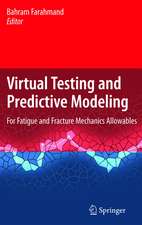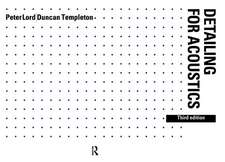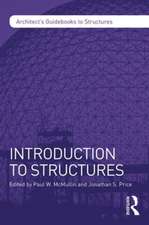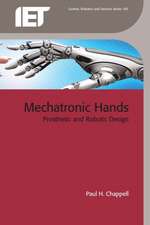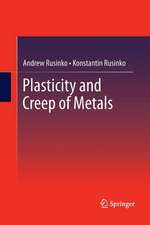Split Hopkinson (Kolsky) Bar: Design, Testing and Applications: Mechanical Engineering Series
Autor Weinong W. Chen, Bo Songen Limba Engleză Paperback – 27 dec 2012
Detailed Kolsky-bar examples are given for different classes of materials (brittle, ductile, soft, etc) and for different loading conditions (tension, torsion, triaxial, high/low temperatures, intermediate strain rate, etc). The Kolsky bars used for dynamic structural characterization are briefly introduced. A collection of dynamic properties of various materials under various testing conditions is included which may serve as a reference database.
This book assists both beginners and experienced professionals in characterizing high-rate material response with high quality and consistency. Readers who may benefit from this work include university students, instructors, R & D professionals, and scholars/engineers in solid mechanics, aerospace, civil and mechanical engineering, as well as materials science and engineering.
Din seria Mechanical Engineering Series
-
 Preț: 391.84 lei
Preț: 391.84 lei - 18%
 Preț: 1110.72 lei
Preț: 1110.72 lei - 15%
 Preț: 593.73 lei
Preț: 593.73 lei - 18%
 Preț: 944.99 lei
Preț: 944.99 lei - 15%
 Preț: 653.14 lei
Preț: 653.14 lei - 17%
 Preț: 363.13 lei
Preț: 363.13 lei - 18%
 Preț: 1239.05 lei
Preț: 1239.05 lei - 15%
 Preț: 640.06 lei
Preț: 640.06 lei - 18%
 Preț: 1129.65 lei
Preț: 1129.65 lei - 15%
 Preț: 522.24 lei
Preț: 522.24 lei - 15%
 Preț: 654.77 lei
Preț: 654.77 lei - 15%
 Preț: 643.34 lei
Preț: 643.34 lei - 15%
 Preț: 611.40 lei
Preț: 611.40 lei - 18%
 Preț: 765.96 lei
Preț: 765.96 lei - 20%
 Preț: 631.71 lei
Preț: 631.71 lei - 18%
 Preț: 1009.22 lei
Preț: 1009.22 lei -
 Preț: 418.34 lei
Preț: 418.34 lei - 15%
 Preț: 640.71 lei
Preț: 640.71 lei -
 Preț: 403.53 lei
Preț: 403.53 lei - 18%
 Preț: 813.97 lei
Preț: 813.97 lei - 18%
 Preț: 1386.48 lei
Preț: 1386.48 lei - 18%
 Preț: 951.47 lei
Preț: 951.47 lei - 18%
 Preț: 833.09 lei
Preț: 833.09 lei - 18%
 Preț: 936.60 lei
Preț: 936.60 lei - 15%
 Preț: 644.49 lei
Preț: 644.49 lei - 18%
 Preț: 941.05 lei
Preț: 941.05 lei - 18%
 Preț: 1386.17 lei
Preț: 1386.17 lei -
 Preț: 399.67 lei
Preț: 399.67 lei - 18%
 Preț: 1389.44 lei
Preț: 1389.44 lei - 18%
 Preț: 790.46 lei
Preț: 790.46 lei - 18%
 Preț: 1388.22 lei
Preț: 1388.22 lei - 18%
 Preț: 1024.53 lei
Preț: 1024.53 lei - 15%
 Preț: 590.16 lei
Preț: 590.16 lei - 18%
 Preț: 1234.00 lei
Preț: 1234.00 lei - 18%
 Preț: 1386.62 lei
Preț: 1386.62 lei - 15%
 Preț: 543.85 lei
Preț: 543.85 lei -
 Preț: 391.61 lei
Preț: 391.61 lei - 18%
 Preț: 944.19 lei
Preț: 944.19 lei - 18%
 Preț: 736.16 lei
Preț: 736.16 lei - 18%
 Preț: 943.88 lei
Preț: 943.88 lei - 15%
 Preț: 693.21 lei
Preț: 693.21 lei - 18%
 Preț: 781.77 lei
Preț: 781.77 lei - 15%
 Preț: 639.08 lei
Preț: 639.08 lei - 23%
 Preț: 737.29 lei
Preț: 737.29 lei - 15%
 Preț: 641.53 lei
Preț: 641.53 lei -
 Preț: 401.42 lei
Preț: 401.42 lei
Preț: 1657.34 lei
Preț vechi: 2021.15 lei
-18% Nou
Puncte Express: 2486
Preț estimativ în valută:
317.17€ • 344.40$ • 266.42£
317.17€ • 344.40$ • 266.42£
Carte tipărită la comandă
Livrare economică 22 aprilie-06 mai
Preluare comenzi: 021 569.72.76
Specificații
ISBN-13: 9781461427605
ISBN-10: 1461427606
Pagini: 400
Ilustrații: IX, 388 p.
Dimensiuni: 155 x 235 x 21 mm
Greutate: 0.56 kg
Ediția:2011
Editura: Springer Us
Colecția Springer
Seria Mechanical Engineering Series
Locul publicării:New York, NY, United States
ISBN-10: 1461427606
Pagini: 400
Ilustrații: IX, 388 p.
Dimensiuni: 155 x 235 x 21 mm
Greutate: 0.56 kg
Ediția:2011
Editura: Springer Us
Colecția Springer
Seria Mechanical Engineering Series
Locul publicării:New York, NY, United States
Public țintă
ResearchTextul de pe ultima copertă
The authors systematically describe the general principles of Kolsky bars, or split Hopkinson bars, which are widely used for obtaining dynamic material properties. Modifications are introduced for obtaining reliable data. Specific experiment design guidelines are provided to subject the specimen to desired testing conditions.
Detailed Kolsky-bar examples are given for different classes of materials (brittle, ductile, soft, etc) and for different loading conditions (tension, torsion, triaxial, high/low temperatures, intermediate strain rate, etc). The Kolsky bars used for dynamic structural characterization are briefly introduced. A collection of dynamic properties of various materials under various testing conditions is included which may serve as a reference database.
This book assists both beginners and experienced professionals in characterizing high-rate material response with high quality and consistency. Readers who may benefit from this work include university students, instructors, R & D professionals, and scholars/engineers in solid mechanics, aerospace, civil and mechanical engineering, as well as materials science and engineering.
Detailed Kolsky-bar examples are given for different classes of materials (brittle, ductile, soft, etc) and for different loading conditions (tension, torsion, triaxial, high/low temperatures, intermediate strain rate, etc). The Kolsky bars used for dynamic structural characterization are briefly introduced. A collection of dynamic properties of various materials under various testing conditions is included which may serve as a reference database.
This book assists both beginners and experienced professionals in characterizing high-rate material response with high quality and consistency. Readers who may benefit from this work include university students, instructors, R & D professionals, and scholars/engineers in solid mechanics, aerospace, civil and mechanical engineering, as well as materials science and engineering.
Caracteristici
Systematic comparisons between standard and high-rate experiments to demonstrate the need for proper design of high-rate material characterization methods Details of the experimental setup and critical issues in the design and construction of these high-rate testing facilities Detailed experiment design guidelines that illustrate the various challenges and experimental remedies in characterizing different classes of materials A collection of dynamic properties of materials that is currently not available in other publications Includes supplementary material: sn.pub/extras

